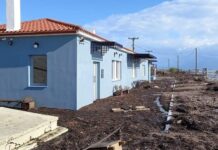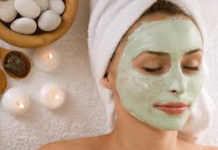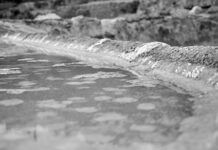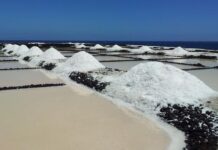Abstract
Mud treatment is one of the oldest treatment procedures. The therapeutic value of water and mud from the Salt Lake (Lacu Sarat) is known for a long time by the inhabitants of this region, but yearly a lot of tourists come here and most of them for a cure. This paper presents the results of studies for the duration of two years, with the students of the Department of Chemistry research group. These were analyzed the total contents of Fe, Cu and Cr in the sapropelic mud, for analytical characterization of the therapeutic and used mud. The methods applied were the titrimetric and molecular absorption spectrometry ones. The obtained results led us to evidence an ionic exchange between the therapeutic mud and the human organism at the epithelial level. In the field of natural cure, Romania has a special position thanks to its natural cure factors: mineral and thermal waters, therapeutic mud and lakes. Variety of natural resources and quality ranks Romania on the first place in Europe.
Keywords
therapeutic mud; sapropelic mud; Fe; Cu; Cr
Αναλυτικός χαρακτηρισμός της σαπροπελεκτικής λάσπης από την αλμυρή λίμνη
Semaghiul Birghila, Simona Dobrinas
Τμήμα Χημείας, Πανεπιστήμιο “Ovidius of Constantza, Mamaia Blvd. 124, 8700, Constantza, Romania
Αφηρημένη
Η επεξεργασία με λάσπη είναι μία από τις παλαιότερες διαδικασίες θεραπείας. Η θεραπευτική αξία του νερού και της λάσπης από την Αλατισμένη Λίμνη (Lacu Sarat) είναι γνωστή εδώ και πολύ καιρό από τους κατοίκους αυτής της περιοχής, αλλά ετησίως πολλοί τουρίστες έρχονται εδώ και οι περισσότεροι από αυτούς για θεραπεία. Αυτή η εργασία παρουσιάζει τα αποτελέσματα των μελετών για διάρκεια δύο ετών, με τους φοιτητές της ερευνητικής ομάδας του Τμήματος Χημείας. Αυτά αναλύθηκαν το συνολικό περιεχόμενο Fe, Cu και Cr στη σαπροπελεκτική λάσπη, για αναλυτικό χαρακτηρισμό της θεραπευτικής και χρησιμοποιημένης λάσπης. Οι μέθοδοι που εφαρμόστηκαν ήταν οι φασματομετρίες τιτλομετρικής και μοριακής απορρόφησης. Τα ληφθέντα αποτελέσματα μας οδήγησαν σε στοιχεία ιοντικής ανταλλαγής μεταξύ της θεραπευτικής λάσπης και του ανθρώπινου οργανισμού σε επιθηλιακό επίπεδο. Στον τομέα της φυσικής θεραπείας, η Ρουμανία κατέχει μια ιδιαίτερη θέση χάρη στους φυσικούς παράγοντες θεραπείας της: μεταλλικά και ιαματικά νερά, θεραπευτική λάσπη και λίμνες. Ποικιλία φυσικών πόρων και ποιότητα κατατάσσει τη Ρουμανία στην πρώτη θέση στην Ευρώπη.
Λέξεις -κλειδιά
θεραπευτική λάσπη? σαπροπονική λάσπη? Fe; Cu? Cr
Sapropel
Article By:
Arthur, Michael A. Graduate School of Oceanography, University of Rhode Island, Kingston, Rhode Island.
Last reviewed:January 2020
DOI:https://doi.org/10.1036/1097-8542.601500ContentHide
- Related Primary Literature
- Additional Reading
A term possessing genetic implications, originally defined as an aquatic sediment rich in organic matter that formed under reducing conditions (lack of dissolved oxygen in the water column) in a stagnant water body. This contrasts with the term gyttja, which is also a sediment high in organic carbon content but which formed under inferred oxygenated conditions in the water column down to the sediment-water interface (thus benthic organisms may be present). Such inferences about water-column dissolved-oxygen contents are not always easy to make for ancient environments. Therefore, the term sapropel or sapropelic mud has been used loosely to describe any discrete black or dark-colored sedimentary layers (>1 cm or 0.4 in. thick) that contain greater than 2 wt % organic carbon. Sapropels may be finely laminated (varved) or homogeneous, and may less commonly exhibit structures indicating reworking or deposition of the sediment by currents. Sapropels largely contain amorphous (sapropelic) organic matter derived from planktonic organisms (such as planktonic or benthic algae in lakes or plankton in marine settings). Such organic matter possesses a large hydrogen-to-carbon ratio; therefore, sapropelic sequences are potential petroleum-forming deposits. The enhanced preservation of amorphous organic matter in sapropels may indicate conditions of exceptionally great surface-water productivity, extremely low bottom-water dissolved-oxygen contents, or both. Some sapropels may, however, contain substantial amounts of organic matter derived from land plants.









![Effect of sea mud compresses from Messolonghi lagoon as a treatment for cellulite [Experimental study]](https://saltandmud.gr/wp-content/uploads/2021/08/unnamed-218x150.png)










